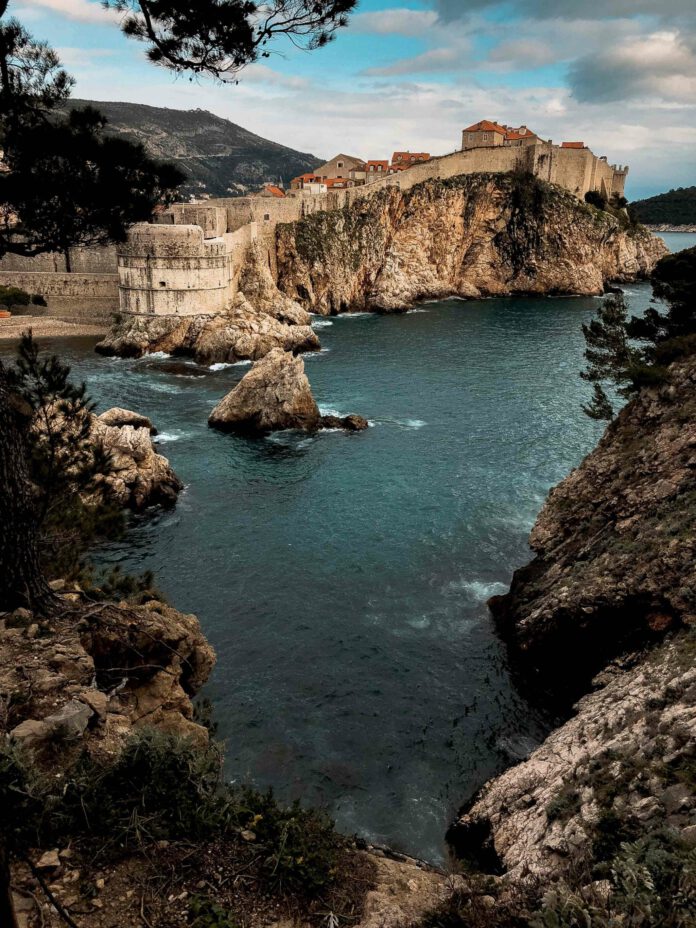Dubrovnik is the pearl on the coast of Croatia. Sometimes independent, sometimes under foreign rule, glorious and steadfast, the city shows itself from its most beautiful side in autumn. When the tourist crowds subside, the splendor and grace of one of the most beautiful cities in the Mediterranean are revealed once again.
Enough is enough! The old town served as a backdrop for numerous scenes in the series “Game of Thrones” and sparked tourist interest in a city that didn’t really need it from the second season onwards. One must imagine that in high summer, up to seven cruise ships dock at the port every day, only 15 minutes by bus from the city walls. In addition to the thousands of cruise vacationers, there are also tourists arriving by car or plane, and since 2012, fans of the popular TV series adding to the mix. When you see the number of boutiques and guided tours specializing in the fantasy series, it becomes clear how much commercial tourism is encroaching on the city’s cultural and historical heritage.
A Coveted Beauty
The pearl on the Adriatic attracts masses of blindly admiring visitors for its beauty, almost suffocating its character in the hustle and bustle. However, this should not deter anyone from visiting this wonderful South Croatian city. It is advantageous to plan your holiday outside the overcrowded holiday seasons. In autumn, for example, when the siege by cruise ships eases up, low-cost flights remain grounded, and the glowing cobblestones in the old streets finally come to rest. That’s when Dubrovnik flourishes. And the history of the eternal city regains its rightful place…

150 Years Under Venetian Rule
Dubrovnik has a long and eventful history. Founded in the 7th century after the inhabitants of the neighboring city of Epidaurus (today’s Cavtat) chose the place as a refuge following the Slavic invasions. Under the protection of Byzantium, the city expanded. In the 12th century, the fortified city eventually became wealthy through its trading fleet. In 1204, it fell under Venetian rule. 150 years later, it regained its independence. This marked the beginning of the famous Republic of Ragusa. Until the 17th century, Dubrovnik had a significant influence on Dalmatia and the Mediterranean, trading in raw materials and building large ships in its own shipyards. The powerful trading fleet had a presence in several cities, including Marseille, Barcelona, Tunis… Magnificent palaces sprang up in the city. Then, in 1667, the catastrophic earthquake struck, undoing everything. The city, rebuilt in the Baroque style, regained momentum but then fell into obscurity after annexation by the Austrian Empire in the 19th century until 1918. It wasn’t until the post-war period from 1945 with the arrival of the first tourists, initially from Eastern countries and later from around the world, that Dubrovnik reemerged.
« Until the 17th century, the independent Republic of Ragusa had a significant influence on Dalmatia and the Mediterranean. »
In the off-season, it’s delightful to stroll through the alleys. In the west, after passing through the Pile Gate, you’ll immediately encounter the first treasures: the Onofrio Fountain (1438) with its grotesque faces spouting water, the 15th-century Monastery of St. Clare, the Church of the Savior, the Franciscan Monastery with its pharmacy, the oldest in all of Croatia. A bit further, you’ll reach the famous and always crowded Stradun, lined with beautiful 17th-century buildings, the synagogue in Žudioska Street, reminding us of the longstanding Jewish community here, formed by believers expelled from Spain at the end of the 15th century.
The Sponza Palace
The Stradun,
